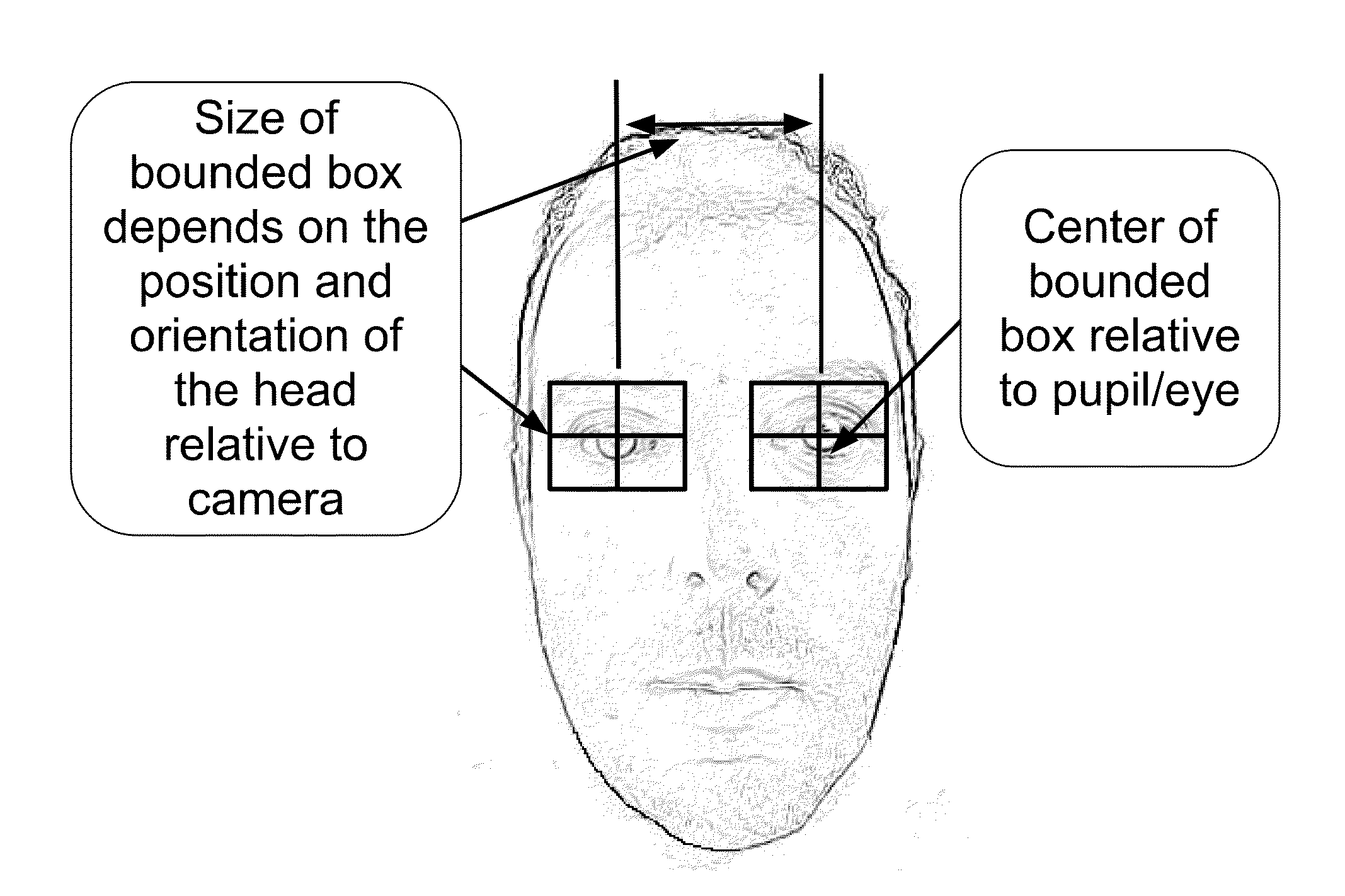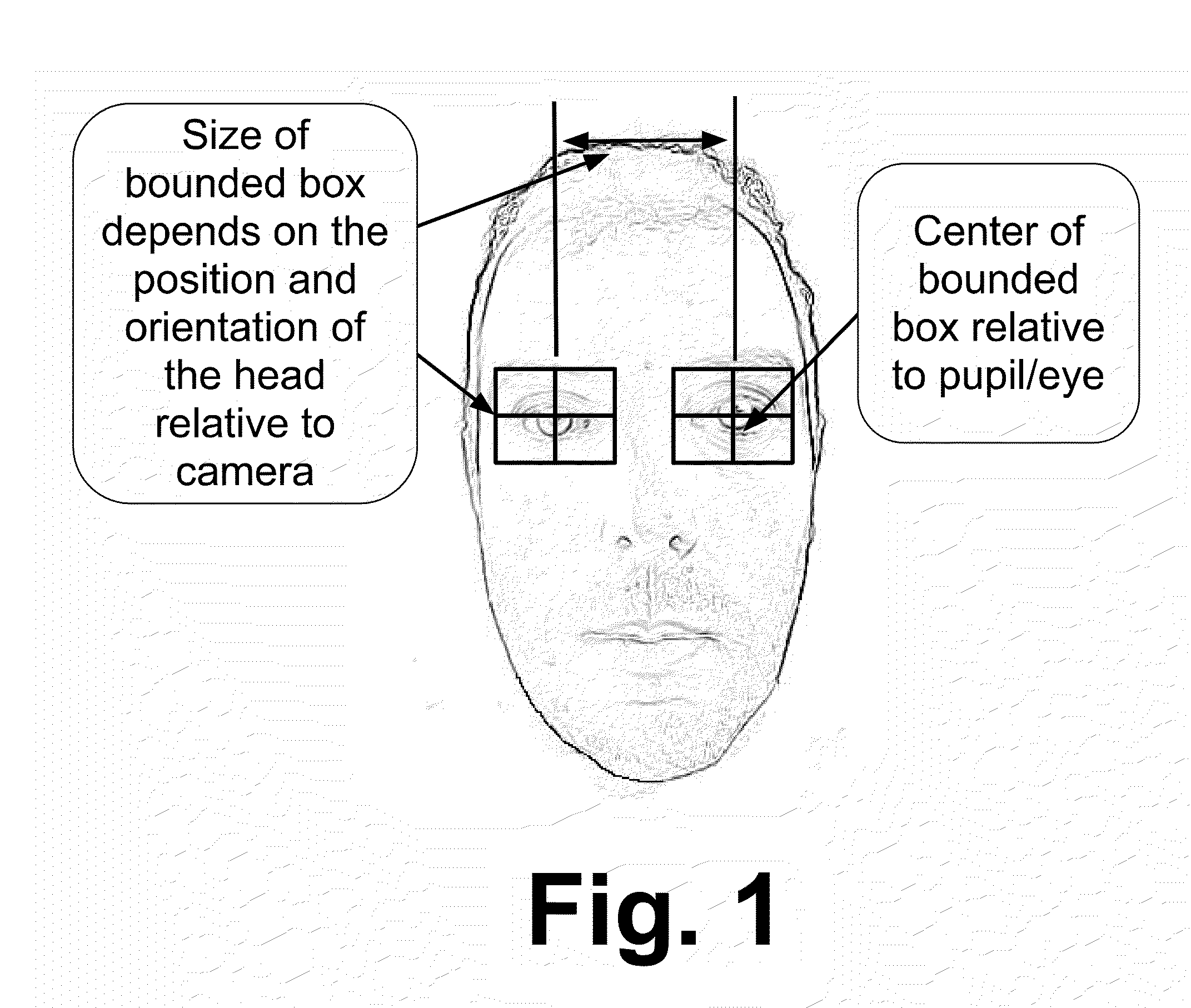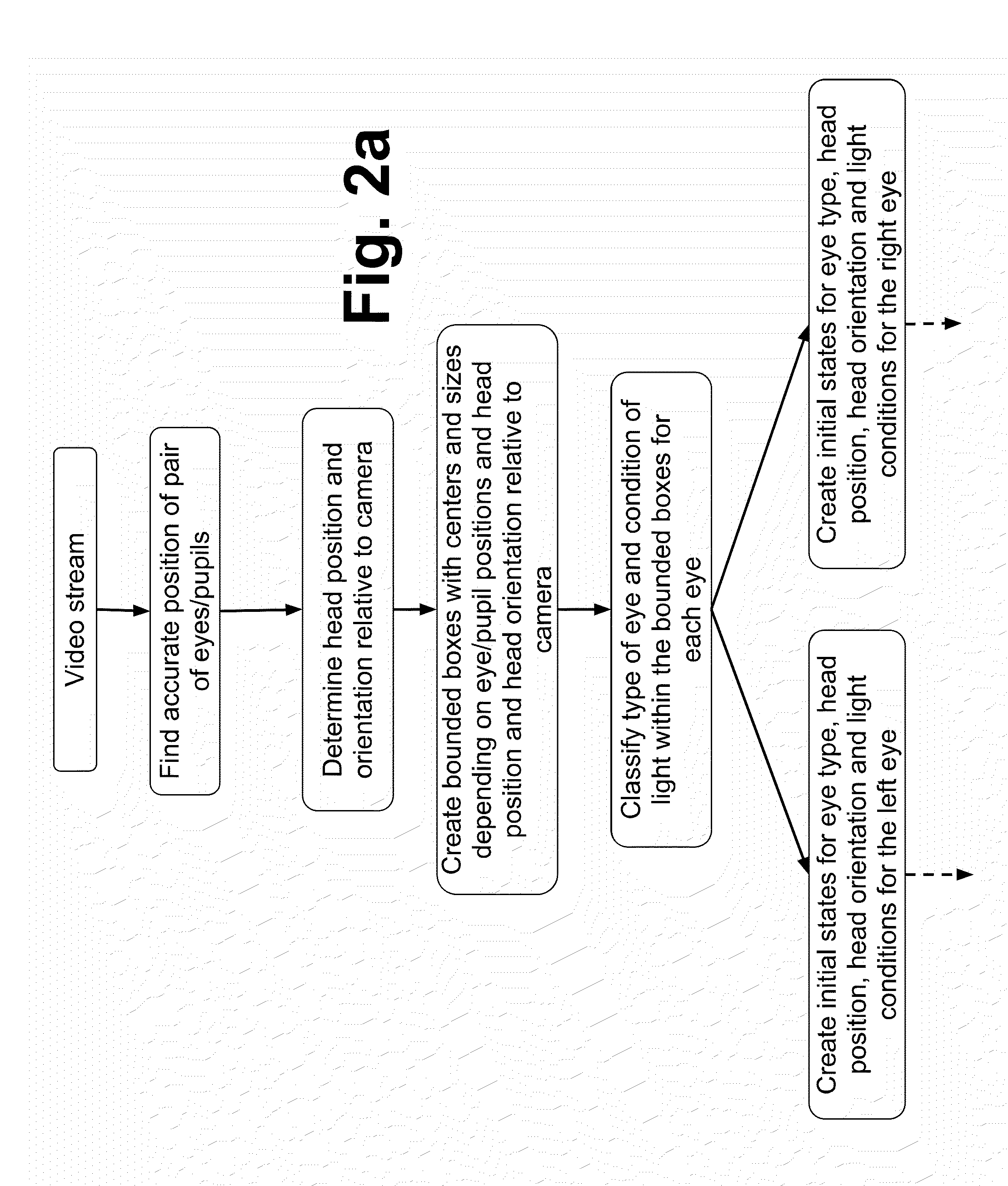Method for gaze tracking
- Summary
- Abstract
- Description
- Claims
- Application Information
AI Technical Summary
Benefits of technology
Problems solved by technology
Method used
Image
Examples
Example
[0092]As stated above, in the frequency domain a much higher resolution of gaze direction is possible because the change of information in the frequency domain around the pupil is followed, not the pupil itself. In other words, by following information in the frequency domain, the changes in pupil position, eye white around the pupils, eye corners, eye lid position are all followed at the same time, and the combination of all these changes can be followed in a small sparse zone in the frequency domain.
[0093]The information in the frequency domain makes it much easier to capture such geometric characteristics of a spatial domain image.
[0094]Converting an image to the frequency domain is well established, being a discrete rather than continuous 2-dimensional Fourier transformation. The Fourier Transform is used in a wide range of applications, such as image analysis, image filtering, image reconstruction and image compression, text orientation finding and more.
[0095]The main transform...
PUM
 Login to View More
Login to View More Abstract
Description
Claims
Application Information
 Login to View More
Login to View More - R&D
- Intellectual Property
- Life Sciences
- Materials
- Tech Scout
- Unparalleled Data Quality
- Higher Quality Content
- 60% Fewer Hallucinations
Browse by: Latest US Patents, China's latest patents, Technical Efficacy Thesaurus, Application Domain, Technology Topic, Popular Technical Reports.
© 2025 PatSnap. All rights reserved.Legal|Privacy policy|Modern Slavery Act Transparency Statement|Sitemap|About US| Contact US: help@patsnap.com



